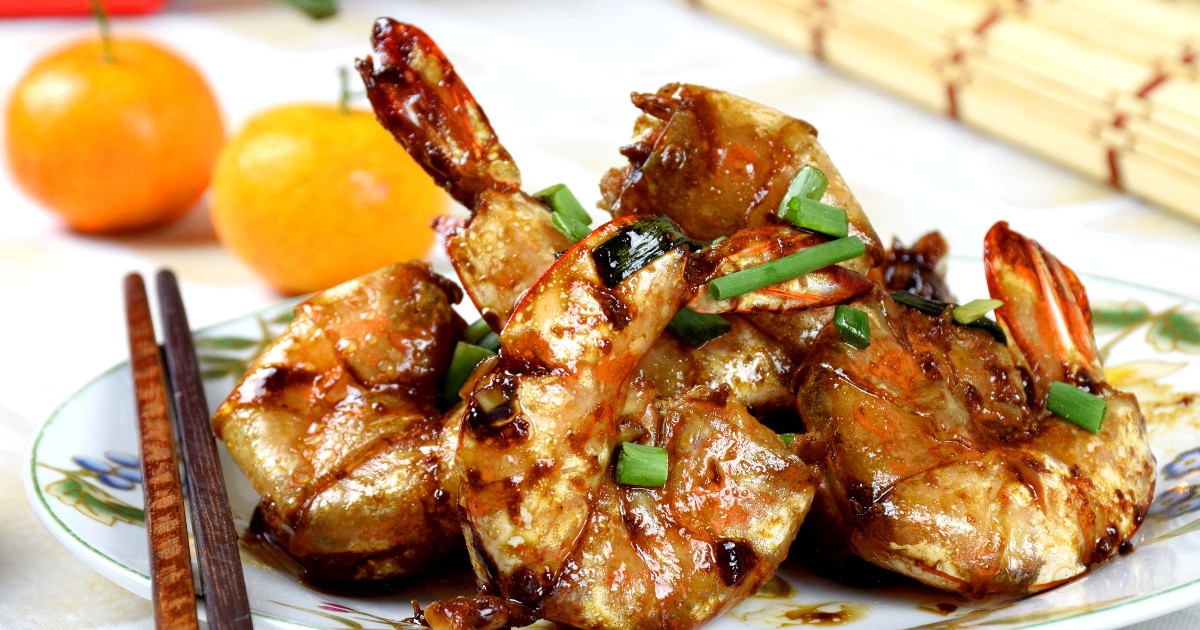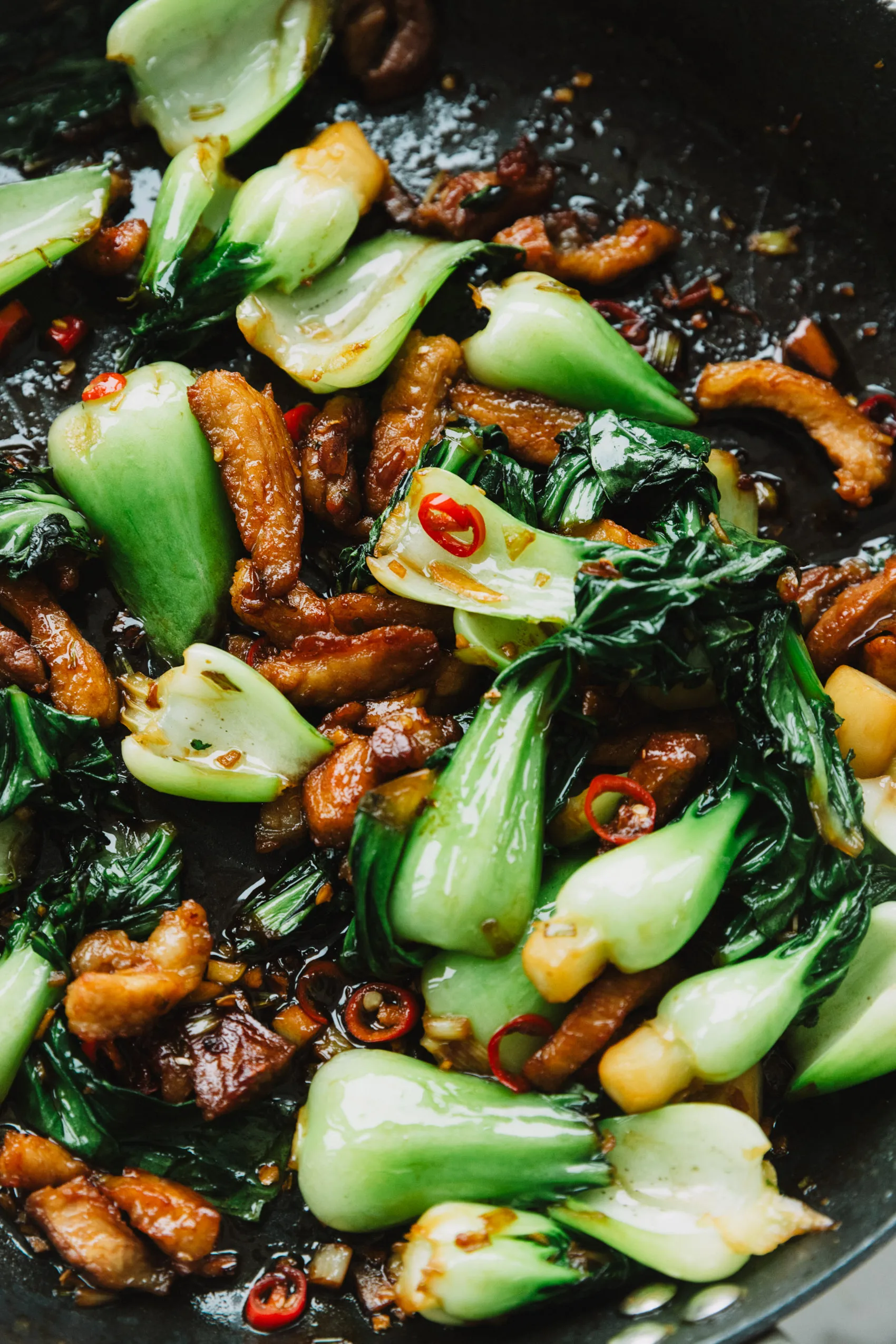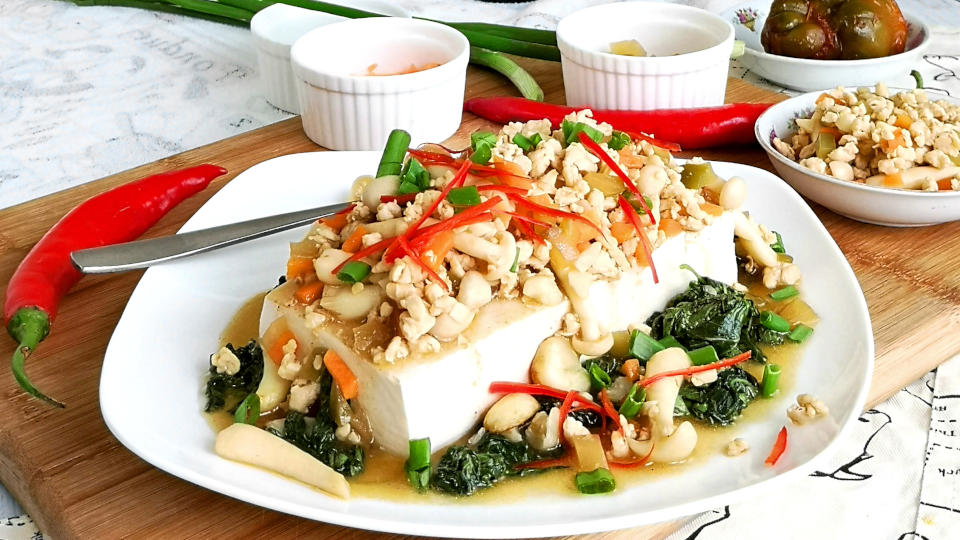Soy Sauce Shrimp (豉油王蝦/干煎虾碌) is a delightful Chinese prawn recipe that can be prepared in just twenty minutes, primarily seasoned with soy sauce. This pan-fried shrimp offers a unique flavor profile, distinct from Western-style garlic butter shrimp, shrimp casserole, or battered fried shrimp.
Give this recipe a try, and you’ll surely remember its exquisite taste!
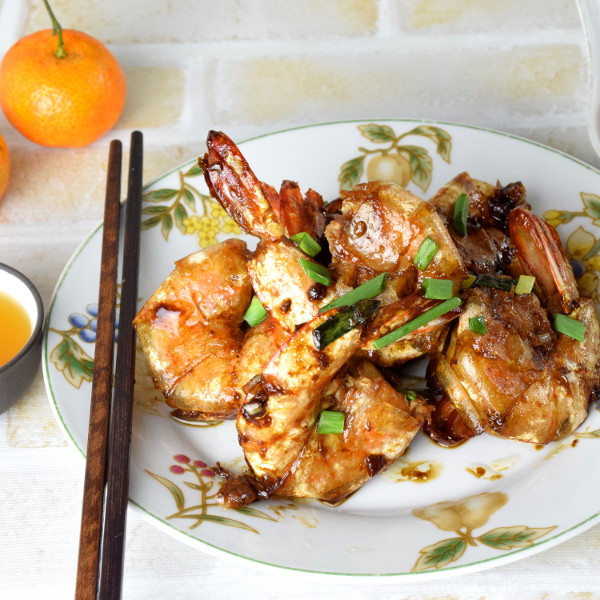
Note: This post may contain affiliate links. Please read the privacy policy for more information. Commissions may be earned for purchases made through links in this post. As an Amazon Associate, I earn from qualifying purchases.
The Main Ingredients for Preparing Soy Sauce Shrimp
a. Shrimp
For Chinese prawn recipes, large fresh prawns are ideal due to their enhanced flavor and meaty texture. Frozen shrimp tend to be less flavorful and are better suited for dishes with multiple ingredients, such as shrimp fried rice.
b. Premium-Grade Soy Sauce
Light soy sauce serves as the primary seasoning in this soy sauce shrimp recipe and is a staple in most Asian prawn dishes. Light soy sauce is preferred over dark soy sauce, as the latter can overshadow the shrimp’s natural color. Dark soy sauce is only used in small quantities for its caramelized flavor when necessary.
Opt for premium-grade soy sauce (also known as first-draw soy sauce) as the dish relies heavily on its quality. Since saltiness can vary between brands, you may need to adjust the quantity specified in the recipe.
c. Other Seasonings
- Shaoxing wine: This is the standard wine used in Chinese cooking. If you prefer to avoid alcohol, chicken broth can be used as a substitute.
- Sesame oil: This oil has a strong flavor and should be used sparingly. It effectively masks any fishy odor from the seafood.
- Oyster sauce can be added in equal parts with light soy sauce for a different flavor profile.
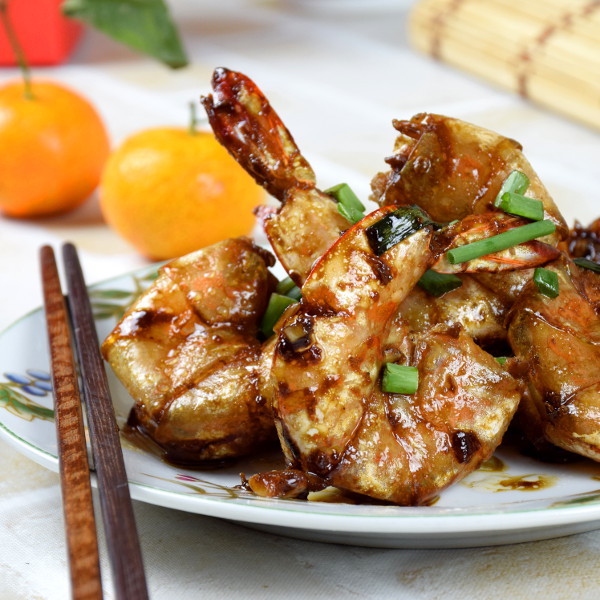
A Step-by-Step Guide to Making Soy Sauce Shrimp
1. Prepping the Shrimp
- Use a sharp knife or scissors to remove the head and legs of the shrimp. Also, remove the telson, the sharp last segment of the abdomen.
- Make a shallow cut down the back of the prawns from head to tail and extract the intestinal vein located just beneath the surface.
- Butterfly the shrimp by deepening the cut on the back. This enhances appearance and reduces cooking time.
- Rinse the shrimp under running water and drain using a colander or wire mesh strainer.
2. Marinate the Shrimp
Marinate the shrimp with light soy sauce, cornflour, pepper, and sugar. The cornstarch helps to retain moisture during frying, minimizing splatter. A marination time of fifteen minutes is sufficient. While most Chinese recipes use white pepper, black pepper can also be used without noticeable difference.
3. Make the Sauce
Combine soy sauce, Shaoxing wine, and sesame oil to create the sauce. Additional flavor variations can be found in the tips section below.
4. Pan-Fry the Shrimp
- Heat two tablespoons of vegetable oil in a frying pan. Peanut oil is preferred, but any neutral vegetable oil will work.
- Add the shrimp to the pan when the oil is not too hot. Gradually increase the heat to medium; adding shrimp to hot oil can cause them to stick.
- Sear the shrimp on both sides for about a minute (1.5 minutes for larger prawns). Avoid moving the shrimp around while searing.
- Add minced garlic and scallions when the shrimp are about 70% cooked, sautéing until aromatic. The shrimp should be opaque by this point. Avoid overcooking to prevent toughness.
- Check for excess oil in the pan before adding the sauce. Remove some oil if you prefer a less oily dish.
- Add the sauce to the shrimp, stir-frying until it starts to dry and forms a coating on the shrimp.
- Serve garnished with chopped scallions and optional white sesame seeds, alongside white rice.
Note: For a vegetable option, consider adding bell peppers during stir-frying, or chili peppers for a spicy kick.
Ingredients
Ingredients A – Shrimps and Marinade
Ingredients B – Aromatics
- 30 g scallions
- 2 teaspoons chopped garlic
Ingredients C – Sauce
Ingredients D – Others
- 2 tablespoons vegetable oil
Instructions
- Remove the head and legs of the shrimps.
- Make a shallow cut down the back of the shrimps and pull out the intestinal vein.
- Butterfly the shrimp.
- Rinse the shrimps and drain away the water.
- Combine all the ingredients to make the sauce.
- Heat the vegetable oil in the pan and sear the shrimps on both sides until nearly cooked.
- Add the aromatics to the pan and stir-fry until aromatic.
- Add the sauce to the shrimp and stir-fry until the sauce forms a coating on the shrimp.
- Dish out, garnish with more scallions, and serve.
Notes
Variation: Substitute 1 tablespoon of light soy sauce with 1 tablespoon of tomato ketchup plus 1 teaspoon of Worcestershire sauce.
Recommended Products
As an Amazon Associate and member of other affiliate programs, I earn from qualifying purchases.
Nutrition Information:
Yield: 8
Serving Size: 8 shrimps
Amount Per Serving:
Calories: 84
Total Fat: 4g
Saturated Fat: 0g
Trans Fat: 0g
Unsaturated Fat: 4g
Cholesterol: 79mg
Sodium: 560mg
Carbohydrates: 2g
Fiber: 0g
Sugar: 0g
Protein: 9g
This data was provided and calculated by Nutritionix on 5/24/2019
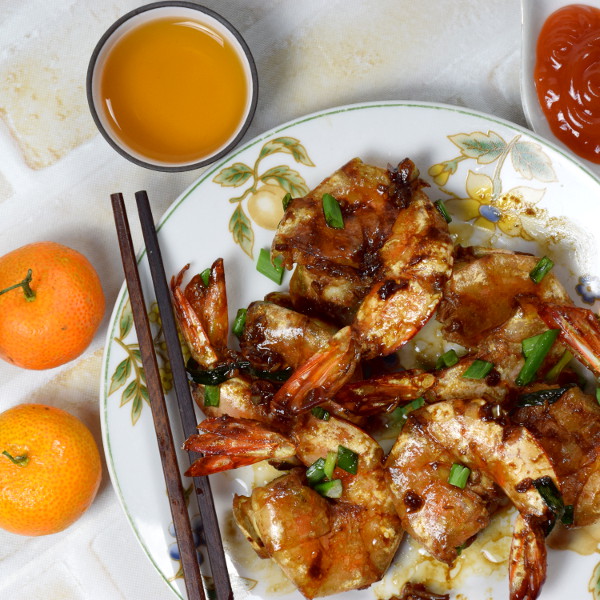
Tips to Make the Best Chinese Soy Sauce Shrimp
1. Should You Remove the Shell Before Frying?
Keeping the shell intact or leaving the tail on enhances the dish’s appearance. Shrimp with shells look appealing on the dining table, are more succulent, and retain their natural flavor. For this Chinese stir-fry prawn recipe, I recommend leaving the shell on while removing the heads and legs.
While unshelled shrimp may be more convenient for everyday meals, they tend to lose flavor compared to their shelled counterparts. The flavor profile of pan-fried shrimp varies slightly between shelled and unshelled versions. Unshelled shrimp cook quickly, while those with shells can hold more sauce and remain juicier. Ultimately, the choice is yours.
2. Is Marinating the Shrimp Necessary?
Not all Chinese prawn recipes require marination. Some cooks prefer to pat the shrimp dry and fry them without marinating. However, marinating enhances the shrimp’s flavor without being overpowering, especially since the shrimp will be coated with sauce later. Hence, salt is omitted from the recipe.
3. Use Green Onion and Garlic
Scallions (green onions) and minced garlic are commonly used as aromatics in Asian prawn recipes. Add them to the shrimp when they are about 70% cooked, as they cook faster and can burn if added too early.
4. Flavor Variations
Consider adding or partially substituting soy sauce with the following ingredients for a unique flavor:
- Tomato ketchup: Replacing half of the light soy sauce with tomato ketchup drastically changes the dish’s flavor. This variation is popular in Hong Kong and is known as Stir Fried Ketchup Shrimps (茄汁蝦碌).
- Worcestershire sauce: While not strictly a Chinese ingredient, it is commonly used in Chinese restaurants. Having lived in Malaysia and Hong Kong, I found that Worcestershire sauce can enhance many traditional Chinese dishes. I recommend adding a teaspoon of Worcestershire sauce along with a tablespoon of tomato ketchup for a delightful twist.
Are Shrimp and Prawns the Same Thing?
Shrimp and prawns are often used interchangeably and referred to as 虾 in Chinese. Most Chinese people do not distinguish between the two. The primary difference lies in their size and body shape: shrimp are generally smaller and have a slender, curved shape, while prawns are larger with a straighter, elongated body. In this article, the terms shrimp and prawns will be used interchangeably.
Note: Perfectly pan-fried shrimp should be slightly firm with a hint of crunch, and the meat should be bouncy and juicy. This can only be achieved by using fresh shrimp and avoiding overcooking.
If You Enjoy This Asian Pan-Fried Shrimp, Explore More Chinese Prawn Recipes:
- Honey garlic shrimp can be prepared in just fifteen minutes, infused with honey, soy, and a splash of Shaoxing wine.
- Salt and pepper shrimp are deep-fried and perfect for special occasions.
- Shrimp fried rice is a quick and satisfying meal, with detailed preparation instructions provided in this article.
- Kung Pao shrimp offers a spicy twist, inspired by the famous Kung Pao chicken recipe.

